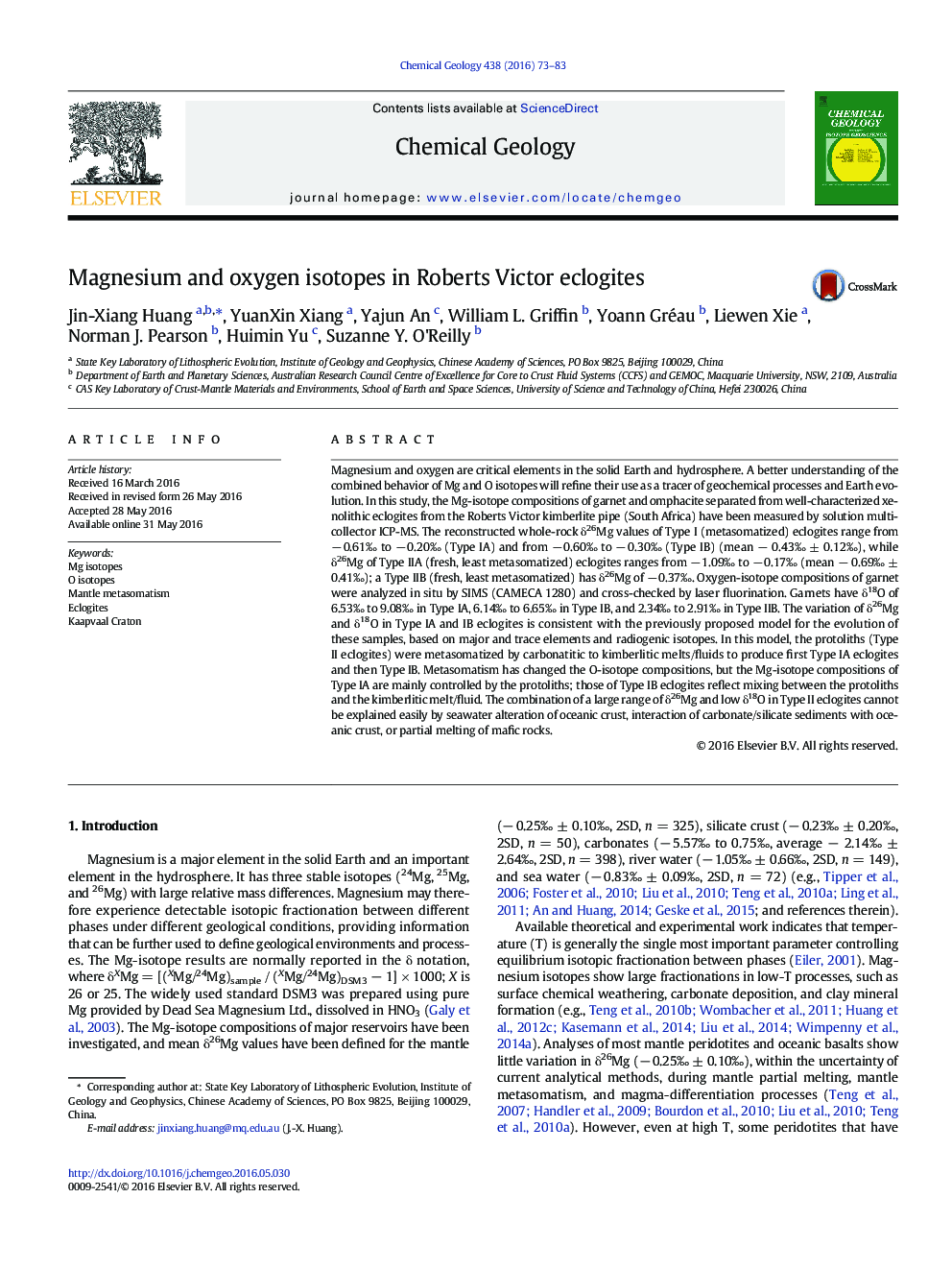| Article ID | Journal | Published Year | Pages | File Type |
|---|---|---|---|---|
| 6436062 | Chemical Geology | 2016 | 11 Pages |
Magnesium and oxygen are critical elements in the solid Earth and hydrosphere. A better understanding of the combined behavior of Mg and O isotopes will refine their use as a tracer of geochemical processes and Earth evolution. In this study, the Mg-isotope compositions of garnet and omphacite separated from well-characterized xenolithic eclogites from the Roberts Victor kimberlite pipe (South Africa) have been measured by solution multi-collector ICP-MS. The reconstructed whole-rock δ26Mg values of Type I (metasomatized) eclogites range from â 0.61â° to â 0.20â° (Type IA) and from â 0.60â° to â 0.30â° (Type IB) (mean â 0.43â°Â ± 0.12â°), while δ26Mg of Type IIA (fresh, least metasomatized) eclogites ranges from â 1.09â° to â 0.17â° (mean â 0.69â°Â ± 0.41â°); a Type IIB (fresh, least metasomatized) has δ26Mg of â 0.37â°. Oxygen-isotope compositions of garnet were analyzed in situ by SIMS (CAMECA 1280) and cross-checked by laser fluorination. Garnets have δ18O of 6.53â° to 9.08â° in Type IA, 6.14â° to 6.65â° in Type IB, and 2.34â° to 2.91â° in Type IIB. The variation of δ26Mg and δ18O in Type IA and IB eclogites is consistent with the previously proposed model for the evolution of these samples, based on major and trace elements and radiogenic isotopes. In this model, the protoliths (Type II eclogites) were metasomatized by carbonatitic to kimberlitic melts/fluids to produce first Type IA eclogites and then Type IB. Metasomatism has changed the O-isotope compositions, but the Mg-isotope compositions of Type IA are mainly controlled by the protoliths; those of Type IB eclogites reflect mixing between the protoliths and the kimberlitic melt/fluid. The combination of a large range of δ26Mg and low δ18O in Type II eclogites cannot be explained easily by seawater alteration of oceanic crust, interaction of carbonate/silicate sediments with oceanic crust, or partial melting of mafic rocks.
